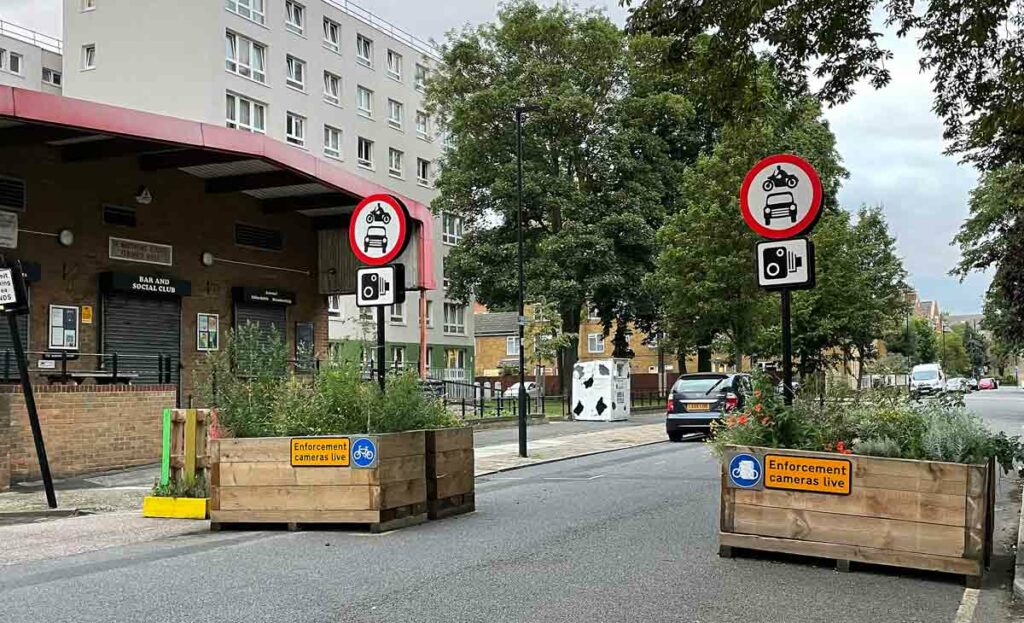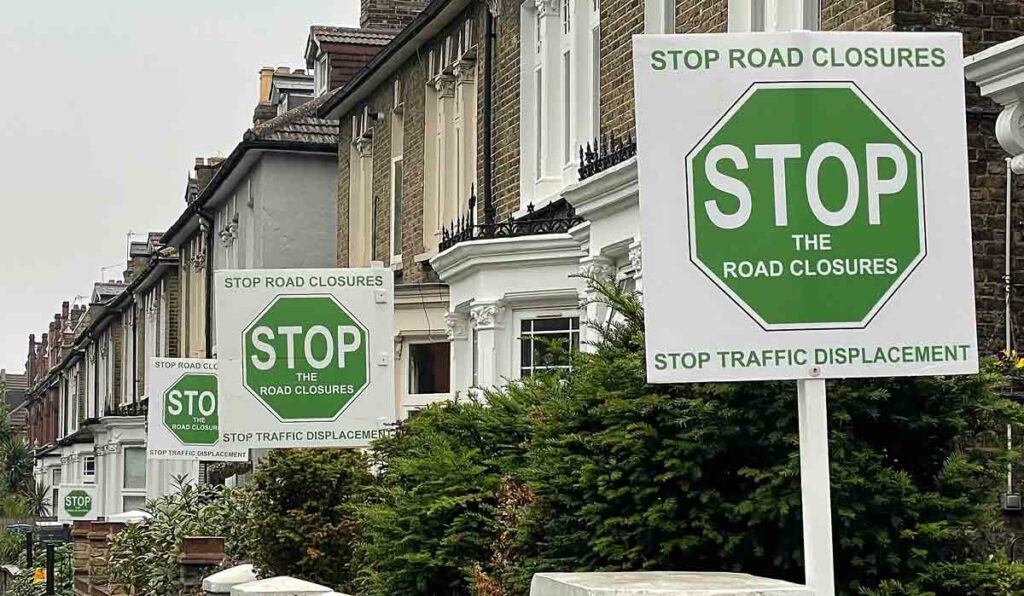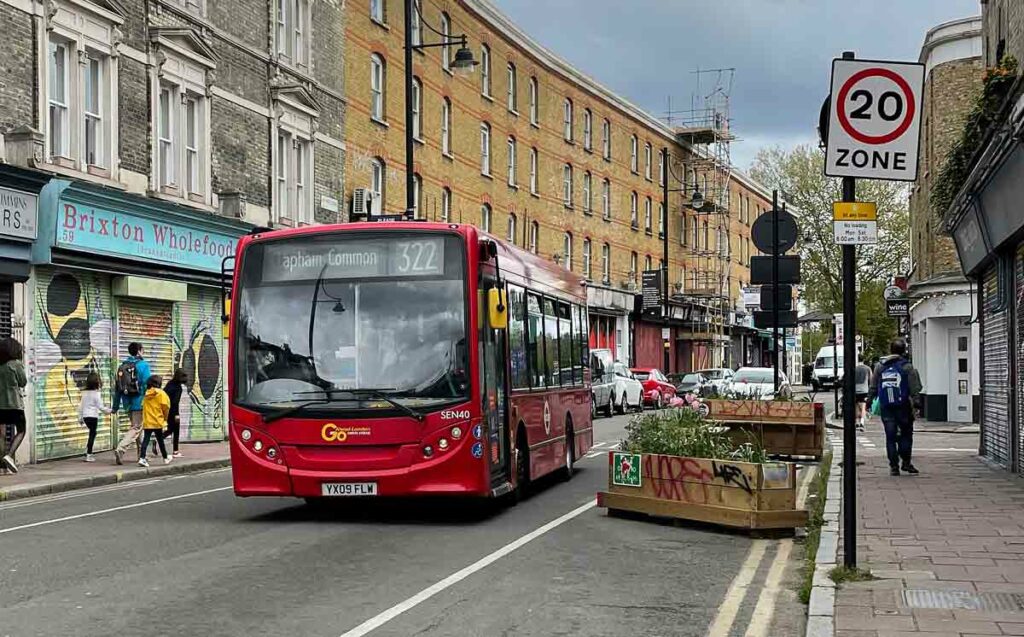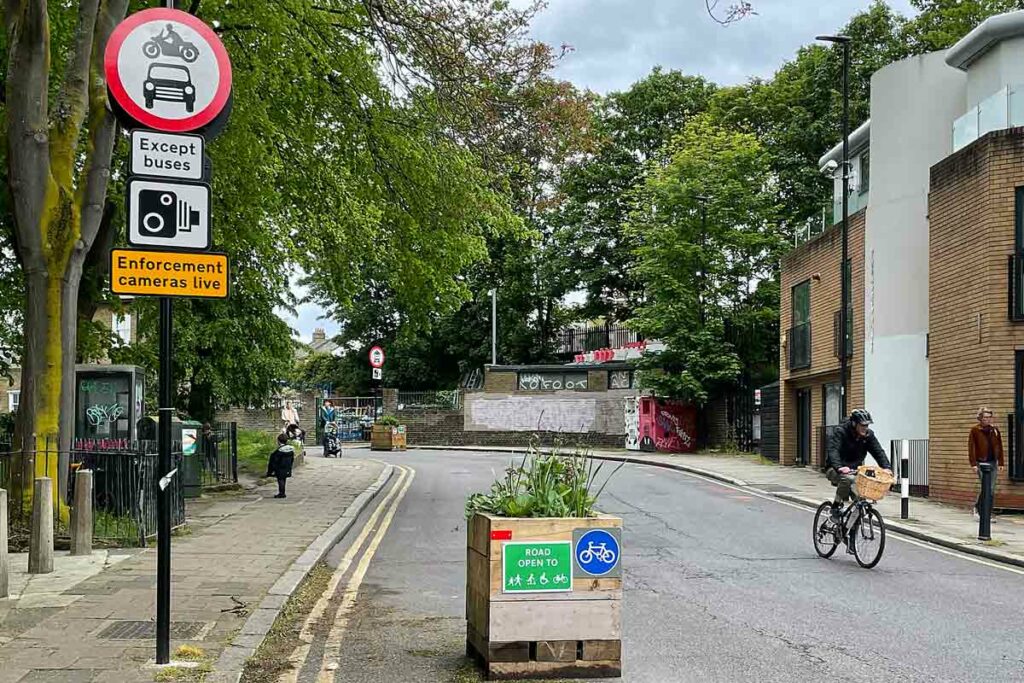
Thirty Lambeth residents were central to new research on how to improve the planning and introduction of low traffic neighbourhoods (LTNs).
Around 100 people living with low traffic neighbourhoods in Lambeth, Wandsworth and Birmingham took part in the research project.
It was designed to help ensure that lessons are learned from the introduction of LTNs during the first Covid lockdown.
It was paid for by the European Climate Foundation and carried out by the National Centre for Social Research (NatCen), Britain’s largest independent social research organisation.
It found that residents want to see thorough engagement with local communities at proposal stage, a more sensitive and gradual introduction of schemes, and additional measures to make it easier to get around without driving.
NatCen led “deliberative workshops” with residents selected to ensure diversity and a wide range of views on LTNs.
They heard “impartial evidence” and had space and time for in-depth debate about the schemes implemented by local councils with central government funding.
Participants generally expressed openness to efforts to provide more space for cycling and walking as well as reducing traffic and pollution on residential streets.

However, when reflecting on their own experience, they felt the current model needs improvement.
In particular, participants recommended:
- More information and opportunity to have a say about LTN proposals, with efforts made to engage a cross-section of local residents on an ongoing basis
- More sensitive implementation, with clearly visible cameras and signage, and grace periods where warnings are given rather than fines
- More investment in other measures, such as cycle lanes and bus services to make it easier to leave the car at home.
A questionnaire after the workshops, found that 31 out of 63 respondents had changed their views on LTNs as a result of taking part, while 32 had not.
Among those who changed their views, around 50% supported LTNs to a greater extent, while around a third were more opposed than when they began deliberations.
The main reasons given for supporting them more were that respondents felt better informed about the reasons behind the introduction of LTNs and more aware of the environmental, health and safety benefits of LTNs.
The main reason given for opposing them more was that respondents had become aware of how they impacted other people, including local businesses and more vulnerable residents.

NatCen lists 10 ways to make a success of LTNs, based on the residents’ responses. Despite a wide range of views, they largely agreed on these key recommendations:
- Local authorities should engage with LTN residents, boundary residents and businesses from the very start, and provide relevant information
- Consultation or resident engagement should be ongoing and be inclusive and accessible for all
- A credible rationale for LTNs, including an explanation of why they are needed in a particular area and the likely benefits, for instance, evidence for the reduction of traffic and improvement in air quality
- Local authorities should provide a map of all LTNs in their borough and neighbouring boroughs to help residents navigate them. LTNs (and changes to them) should be updated on sat-nav systems
- LTNs should be introduced gradually and include a “grace period” to allow residents time to understand and adjust to them
- Exemptions and resident passes for those who need exemptions, for instance, Blue Badge holders
- Signage and traffic cameras should be clearly visible
- Barriers and planters should be more flexible to allow access for key groups such as emergency services
- Incentivising people to walk (by introducing better street lighting), and cycle (by making roads safer), as well as providing more secure on-street bike storage
- Better communications around cycling and walking options inside LTNs, as well as improved public transport.

Quotes from participants
“Yes [my views have changed], I was completely supportive of LTNs before this session but now understand from other participants that there are negative impacts of LTNs for some residents who live in the surrounding area.”
Resident from Lambeth
“It’s nice in theory but in reality we don’t have all the other measures to go with it that would actually improve how we’re going to get somewhere.”
Resident from Lambeth
“After taking part last night I feel a lot more educated about LTNs and their purpose. I think they can really help the local community, reduce pollution, asthma in younger children and make the streets and roads nearby to me safer for everybody. I fully support LTNs in my area and other areas, but it has to be a coordinated effort, so all the different London boroughs come [together] to get LTNs working properly.”
Resident from Wandsworth
The findings were discussed today (20 January) at an online meeting with politicians and other key players.
A copy of the research report is available online.





